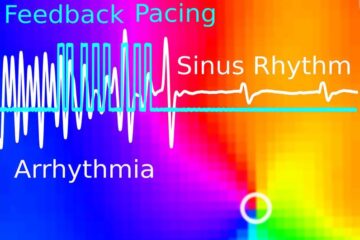Knowing means simplifying

Individuals affected by celiac disease (gluten intolerance) often present an altered calcium (Ca2+) metabolism that can cause osteopenia, a bone mass decrease due to the impaired adsorption of this mineral, which can lead to osteoporosis (in 35-85% of the cases).
This phenomenon is particularly frequent among late-diagnosed celiac patients, as in the case of adult people, but can be present in children too. With the aim of recognizing calcium metabolism alterations and impaired bone mineralization, laboratory and radiology exams, such as dual energy x-ray absorptiometry (DEXA), are often performed. These exams – that provide information on the health status of the bones before the onset of a specific therapy (namely the gluten-free diet) and help to monitor the progression of the bone disease once the diet is started – are nowadays indicated in children too. But are they really necessary in the celiac child?
The answer is no. A research carried out by the Pediatric Clinic of the University of Trieste at the Maternal and Child Health IRCCS Burlo Garofolo (an institute highly specialized in child health) and recently published by the Journal of Pediatrics gave the answer. This study, supervised by Alessandro Ventura, Director of the Pediatric Clinic, confirmed that, when diagnosed, an important percentage of celiac children exhibit an altered bone metabolism as well as deficency in bone mineralization.
At the same time, the study proved that if the celiac child strictly follows the gluten-free diet, all the metabolic and mineralization alterations of the bone normalize within 6-12 months. Such indications, suggest the researchers, might be particularly helpful to pediatricians and might avoid the prescription of unnecessary exams, allowing them to focus on the diet alone.
58 pediatric celiac patients (among which some asymptomatic, but diagnosed being celiac by a separate screening) and 60 healthy children were selected by the medical staff of the Burlo Garofolo to monitor over time their bone situation. Among the investigated metabolic parameters were calcium, phosphorous, parathyroid hormone (PTH) and other markers of bone activity. “Until recently – explains dr. Grazia di Leo from the Department of Gastroenterology of the Pediatric Clinic of the Burlo Garofolo – it was not clear enough whether bone metabolism impairment of the celiac individual was present during childhood, nor it was clear if the length of the exposure to gluten had a role in solving the problem.
Therefore, we decided to check over time (6-12 months of gluten free diet) all celiac children involved in the study, that were found to have an impaired bone metabolism and mineralization, by evaluating the markers of bone health. At the end of the first 6 months of observation, we demonstrated that the gluten-free diet itself is enough to rescue a normal bone condition.
Impaired bone mineralization in celiac individuals recognizes two main causes: first, the difficulty to adsorb nutrients that involves and compromises the adsorption of Vitamin D and calcium. Second, the presence of a chronic inflammatory condition, both local and systemic, that aggravates the general clinical picture. It is widely known that among adults gluten-free diet alone is not sufficient make the bone damage regress. However, in children, as the study demonstrates, a strict gluten-free diet itself might be enough to solve the bone problem in a relatively short time.
“The study carried out at our institute – underlines Alessandro Ventura, the Director the Pediatric Clinic – is the first systematic study on calcium metabolism in children. We learned a very important lesson from it: it is true that celiac disease damages the bone, but monitoring the evolution of bone damage by specific exams is not necessary in pediatric patients. It is far more useful to focus on a strict observance of the gluten-free diet. As far as this issue, the pediatricians’ role is critical. In doing this, apart from a saving of 120 € per child (the cost of the exams), we introduce a form of preventive intervention, as well as “environmental ecology” by avoiding the exposure of growing organisms to, mild as they might be, radiations, such as the ones used in DEXA”.
Media Contact
All latest news from the category: Health and Medicine
This subject area encompasses research and studies in the field of human medicine.
Among the wide-ranging list of topics covered here are anesthesiology, anatomy, surgery, human genetics, hygiene and environmental medicine, internal medicine, neurology, pharmacology, physiology, urology and dental medicine.
Newest articles

Wildfire danger to increase due to climate change
WSL Institute for Snow and Avalanche Research (SLF) researchers expect an elevated wildfire danger in the Alpine Foreland from 2040 onwards due to changing meteorological conditions. The danger currently remains…

Advanced Brain Science Without Coding Expertise
Researchers at Helmholtz Munich and the LMU University Hospital Munich introduce DELiVR, offering a new AI-based approach to the complex task of brain cell mapping. The deep learning tool democratizes…

Gentle defibrillation for the heart
Using light pulses as a model for electrical defibrillation, Göttingen scientists developed a method to assess and modulate the heart function. The research team from the Max Planck Institute for…





















